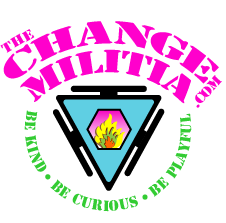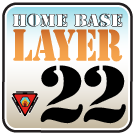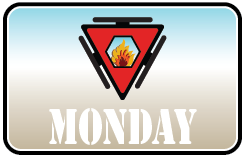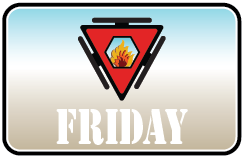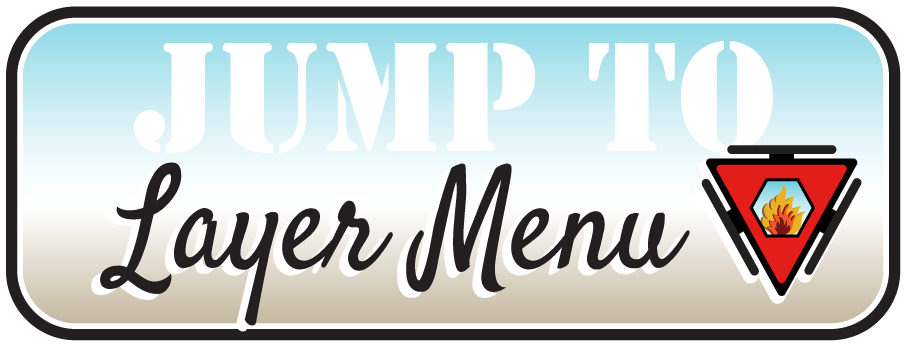Layer Twenty-Two, Week Four – Sunday
- Read Week Four Concepts
- Watch videos and read description for The Dots – Chakra Seven and Spiral Safety Kriya
- Do Movement – The Dots – Chakra Seven
Explore the nature of your personality. If your friends, colleagues, and family described you, what would they say? What first impression do you usually give?
Improvement, growth, and evolution require change and some degree of discomfort.
Here is a quick recap of the first three of the six steps you have been exploring:
- Figure out where most of your energy goes. – Bringing presence to your energy expenditures will help you isolate your imbalances and inefficiencies. Which body do you bias? Which component is your preference? In which bodies and components do you under-invest?
- Does your subconscious mind whisper or scream that you are Too Much or Not Enough? – Your subconscious mind exists as an illusion and projection. Not Enough and Too Much are fiction. Your personality, beliefs, patterns, intolerances, judgments, and habits exist to fuel your subconscious mind. Your subconscious mind evolved to allow you to co-opt the biological necessity of homeostasis.
- How are your successes leading to insecurities? – If you empower your conscious mind and disempower your subconscious, you continue to succeed. If you allow your subconscious any sway, you will question your successes. The Not enough and Too much signals will begin and try to wrestle energy and momentum away from your thoughts, emotions, and actions and toward your fears.
This week you will explore how you allow your subconscious mind to put the brakes on your momentum.
- What is the nature of your ingrained and persistent resistance?
How do you feel about yourself? What are your truths? What default stories do you whisper to yourself? What is the plot progression from your Not enough and Too much fictions? What labels do you assign to yourself?
Monday’s Concepts
When you hear ingrained and persistent resistance, what comes to mind. If you said, habits and personality you get a gold star.
Let’s start by examining the parts of your personality. What are the generalities you maintain about yourself, others, relationships, society, environment, threat, and opportunity?
You will explore this in the focuses this week. Do them! Get to the point where you can easily acknowledge the labels that you assign without internal argument or justification. This is huge.
When you allow that your stuff exists, it removes the judgment and fear associated with the labels. It allows you to logically discern the cost/benefit ratio. It makes it easier to identify and embrace more beneficial options. Figure out what serves you and increase it. Discern what limits you and ignore it.
What if your personality wasn’t something you tried to maintain and confirm? What if you approached each moment as an unformed collection of energies and then configured yourself according to available potentials and opportunities? How expansive and expressive could you be and what could you accomplish?
Look at the self-talk you create about yourself. It probably triangulates between cheerleading, bullying, and debating. Explore where, when, why, and how you shift stories.
Tuesday’s Concepts
After you’ve explored your self-resistance, it is time to look into where you use others to limit your growth, expansion, and success.
As hard as it is to accept, most of your conversations exist to confirm you are in a safe zone. Most of your communications exist to verify others aren’t a threat or to quantify the probability of some future threat.
Jenny is a stylist and a gossip. The quantity and quality of her gossip varies depending on the client. Some clients, those who aren’t perceived as some sort of threat, get benign gossip. Those that challenge Jenny’s comfort levels get a lot more. Jenny uses gossip to ascertain threat levels.
If the client colludes with Jenny, she can soften her vigilance. She gossips to confirm what is safe and what is not safe. She talks to find the size of the box she can exist without worry.
Can you picture this? What are the similar conversations you have? What do you mean when you utter greetings like “How are you doing?,” “What’s Up” and “Hi, it’s good to see you!” Almost always, salutations help to determine threat levels. Are you truly curious about their physical, mental, emotional, and energetic health? If so, does the conversation develop naturally or does it feel like it truncates to your tolerance level?
When I say threat, it usually isn’t an actual threat. It is your subconscious mind looking for an opportunity to co-opt the energy of the interaction for its use. You use relationships and interactions with others as a major way to funnel your energy toward your subconscious mind.

Layer Twenty-Two, Week Four – Wednesday
- Read Wednesday’s Concepts
- Do Movement – The Dots – Chakra Seven
Examine the recurring interactions with people you habitually interact with and find examples of subconscious mind feedings. There will be hundreds, thousands, or hundreds of thousands.
Get to know the different qualities of your interactions. What goes on for you and what is going on for others?
I make a big effort to be social on our local trails. I greet everyone I pass warmly. If I see mountain bikers stopped, I always ask if they have everything they need. A couple of days ago, I came on a couple of guys, mid-thirties, and one of them wasn’t wearing a helmet. His closely cropped and balding head was beet red. In a friendly exclamation, I said “Dude, you are getting burnt to a crisp!” I could see and feel him judge my intent. When he determined I wasn’t judging him, he responded with a confirmation. I stopped and asked if he wanted some sunblock. He agreed.
As I dug around in my backpack, I asked where they were from and introduced myself. After he applied the sunblock, I could still feel him assessing my intent, like he was waiting for something to react to. Some judgment or reason I was being neighborly. I could feel his waiting and I could feel that I had met my intention and that I was ready to keep riding. As I said my goodbyes, his questioning turned to mild confusion. I felt done. Staying and continuing the conversation would have felt like a struggle or a push.
Where does your subconscious mind try to convince you that you should fear relationships or interactions within relationships? What are the time, energy, intimacy, and interactions constraints you or others place? Where is fear curtailing your collaborations?
Those fear signals are anything that causes you to slow, limit, judge, demand, question, stop, or resist energy flows. They will include things like trying to explain, asking for an explanation, being measured, controlling, directing, managing, or coercing.
It may be hard to accept, but an overwhelming percentage of your interactions are fear-based. You communicate primarily to establish boundaries and threat vectors. Intimacy and opportunity will be secondary.
Once you can identify your reactivity, you can begin to moderate your reactions. You can soften into the moment, lower your resistance, and tolerate the discomfort that accompanies opportunity and intimacy.
The final piece will be to explore the non-verbal connection. Configure yourself to reduce your perceived threat to others! First, you soften yourself and then you soften your resistance to others. Feel how you are defensive and soften. Feel for other’s defensive configurations and lower your reactivity. Don’t collude with others’ fear. If they are in fight mode, don’t configure yourself in a way that will increase their reactivity. Soften, increase your stability and flexibility, and make sure you aren’t projecting any demands.

Layer Twenty-Two, Week Four – Thursday
- Read Thursday’s Concepts
- Do Movement – The Dots – Chakra Seven
Thursday’s Focus
Reread the final paragraph in Wednesday’s Concepts. How are you looking for excuses to be triggered by things in your environment?
Next, let’s look at the environmental resistance you use to limit your opportunities and to feed your subconscious mind.
I added a Spiral Safety Kriya to this week’s content. It will help you discern where you might be creating resistance potential in your life.
Enviro-resistances are the fears you hold about the world and the places in your world where you interact… or project you might interact.
With all of these resistances, you aren’t looking for actual threats, you are searching for the potential threats your subconscious mind is creating stories from. Reread the final paragraph in Wednesday’s Concepts. Feel how you might be looking for excuses to be triggered. It might be simple things like habitually getting aggravated when the car in front of you doesn’t use a blinker. Pet peeves are subconscious snacks for your subconscious mind.
Identify your cemented judgments about the things in your world. Where do you lack empathy? What are your preferences and prejudices? Each will be feeding tubes going directly from one of your seven bodies to your subconscious mind.
Bring to mind someone you know who is intolerant. I am picturing some of the people showing up on Twitter being stupid about not wearing masks in public places. They have allowed their subconscious minds to subjugate their higher-level consciousness. Masks take no energy to wear. Not wearing a mask and as my mom would say “throwing a hissy fit” takes a ton of energy.
Racism requires that the racist constantly be in a state of defensive fear ready to judge, demean, and blame. The more racist they are, the less of their energy will be available for growth, happiness, and fulfillment. Their intolerance fuels their fear and the fear becomes entrenched. As it gets more difficult to find balanced expansion, the only way they can feel expansive is to let their reactivity explode.
Markus has a mild case of OCD. He is driven to ask people who are getting into or out of cars the mileage and year of their vehicle… unless the car is green or has white-wall tires. As he navigates the world, he spends a ton of energy monitoring his environment. His mental body needs to know or so his subconscious mind has told him. It is impossible for him to center and balance whenever he is in a place with vehicles or the potential for vehicles. His fear isn’t specific. He doesn’t know why he has to know, but it feels urgent and real. His subconscious mind has co-opted a significant portion of his energetic capacity.
How do you use the past and future to inhibit current potentials and possibilities? Where, when, and how do you talk yourself out of opportunities by invoking your history or some fictional future?
As in the above examples, stories you allow to circulate in your system about past injuries, traumas, or dramas will diminish your capacity to the degree you permit them. All fears will have a future fear embedded. If you had traumas in your past, you are projecting that trauma into some future event. You are afraid it will happen again, and you configure your defenses accordingly. Not enough and Too much deal with what will happen in the future, even if the future is the next instant.
Presencing is the art of not projecting the past or future onto the current moment. As you can presence yourself, you won’t exhaust any of your mental, emotional, physical, or energetic capacities in fear projection. Your energies will be available. Your ability to absorb will be optimized. Creativity and opportunity will be maximized. And you will be defunding your subconscious mind. As you learn and adapt to this way of being, your subconscious mind will have less and less influence on your way of being.
How do you collude with others to curtail your Essence? Consider your temporary and habitual relationships. How do you machinate your interactions to perpetuate your ingrained and persistent resistances? Your subconscious mind convinces you to limit your interactions to those that have fed it in the past. Take any relationship from the grocery store clerk to your boss at work, to some fellow driver going berserk and you will find ways that you collude to confirm each other’s fears, limiting beliefs, and intolerances.
This is a fairly common occurrence between a parent and his/her child. Both have an abundance of energy but very early on they learn that they can trigger each other into an escalating exchange of words and reactions. The results can be cataclysmic. My ex-wife had this very type of relationship with my younger daughter.
As an example, the ex, let’s call her D, would wake up my younger daughter, let’s call her K, by giving her a list of everything she needed to do before she left for school. K was/is not a morning person. She transitions at a leisurely pace toward full consciousness. Having her mother dictate a list of requirements never worked. It always started the morning badly. K would get overwhelmed and not want to get up, D would come back and raise the volume of her demands as she repeated the list. K would escalate her defensiveness and get obstinate. Yelling would continue until the screaming started. More often than not, K would be late for school.
I think I have shared that story before. D had too much energy in the morning than was comfortable. She projected her overwhelm onto K who absorbed it until she also felt like she needed to vent. By the time they left for school, both had ridden the rollercoaster and were spent. This didn’t happen every day, but more often than not. If I was home, I would get K up gently, help her transition from supine to standing, and allow her energy to expand at a rate that felt safe to her. I gave her one task at a time and helped when I could. I offered solutions instead of commands. It started with “Crawl out of those covers and I will help you make your bed.”
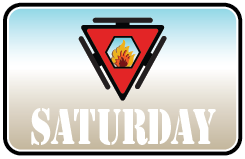
Layer Twenty-Two, Week Four – Saturday
- Read Saturday’s Concepts
- Do Movement – The Dots – Chakra Seven
Track the tension that accompanies your resistance in each of your bodies. Where does resistance manifest itself as tension in your body?
You will find ingrained and persistent resistance in each of your bodies. Let’s do a quick overview of each to get you considering the possibilities.
Physical body resistance. This will be tension and dysfunction (injury and disease). Some tension will be temporary, muscular, and other tensions will be the denser fascia like tendons and ligaments. Habitual physical tension pulls energy from all the other bodies. If the muscles in your neck are tight, you think about them. Your emotional body will react with some sort of label like stress, overwhelm, weak, burdened, or being taken advantage of. Your environmental body will become more defensive and reactive. You will feel less sociable when you are in pain and want to maintain some prescribed amount of distance.
Mental body resistance. Ingrained and persistent mental resistance takes the form of demands, intolerances, and judgments. Anything you think about longer than is necessary drains energy.
Emotional body resistance. Ingrained and persistent emotional resistance is usually the feeling energy you place on your stories. Wounds, traumas, dramas, and projections will all have an emotional energy component. If they didn’t, you wouldn’t hold on to them. You would process them, and they would dissolve.
Environmental body resistance. These will be the boundaries you maintain. Each will require on-going energy outputs to keep them in place.
Energetic body resistance. When you are unbalanced, your energy body must work to maintain the imbalance. If you are stuck in your head, your energy body colludes with your mental body to keep a disproportionate amount of energy in your head. It works to shuttle energy up and keep it from flowing back down.
Next week, you will explore how to Shift from being reactive to responsive.
The Dots – Chakra Seven
- Find a comfortable seat and make sure you have 15-20 minutes of uninterrupted time.
- Take several softening breaths, let the tension melt and your energy begin to flow.
- Make sure you feel settled and grounded before you continue.
- Connect to the energy in your Central Power Channel. Feel your Spinal Fluid coursing up and down your spine.
- Connect the flow of energy in your CPC to your breath. Feel it rise on the inhale and descend on the exhale.
- Don’t continue until you feel the ascending and descending energies.
- Verify you have good posture.
- Become increasingly aware of the energy above your head.
- After you sense the energy flowing in through your Sahasrara Chakra, feel the energy flow down your Central Power Channel.
- As you feel the energy moving into and down your CPC, see if you can feel the energy coming into both sides of your sixth chakra at the same time.
- Once you feel the energy flows in the front and back of your sixth chakra in addition to your seventh, add the front and back of the fifth chakra.
- Follow the same procedure for each of your other chakras, working your way down.
- After you have made your way down to your second chakra, begin to open up your first chakra.
- As you begin to absorb energy into your first chakra, feel for the circulation of energy that happens.
Why it Matters – This is where the pieces come together. You have spent a couple of years getting to know your bodies, components, configurations, chakras, auras, values, and the relationships between them. This practice confirms and expands your awareness of those relationships. This particular movement will help you shift your general or habitual pattern away from hyper-sensitivity and toward curious opportunism.
Everyday Usability – As you begin to master this practice, your awareness of energy patterns will increase. You will begin to feel the energy patterns in others, groups, and situations.
Progression – This feeling of awareness of your major chakras absorbing energy and the circulation of energy that follows is the connecting of the dots.
Spiral Safety Kriya
- Sit quietly
- Soften
- Feel your low belly
- Current30 (physical body)
- Bring attention to the place of most sensation (sit bones, low back, etc.)
- Move, adjust, and enliven that area.
- Sequentially verify that each major organ, bone, and tissue is not threatened.
- Verify that the lower half and upper half of the body and then the entire body is safe.
- Explore and verify that other bodies are not threatened.
- Confirm proximally to distally that your environment is without threat.
- Acknowledge that universal safety exists in that particular moment.
- Allow and explore deeper levels of softening.
